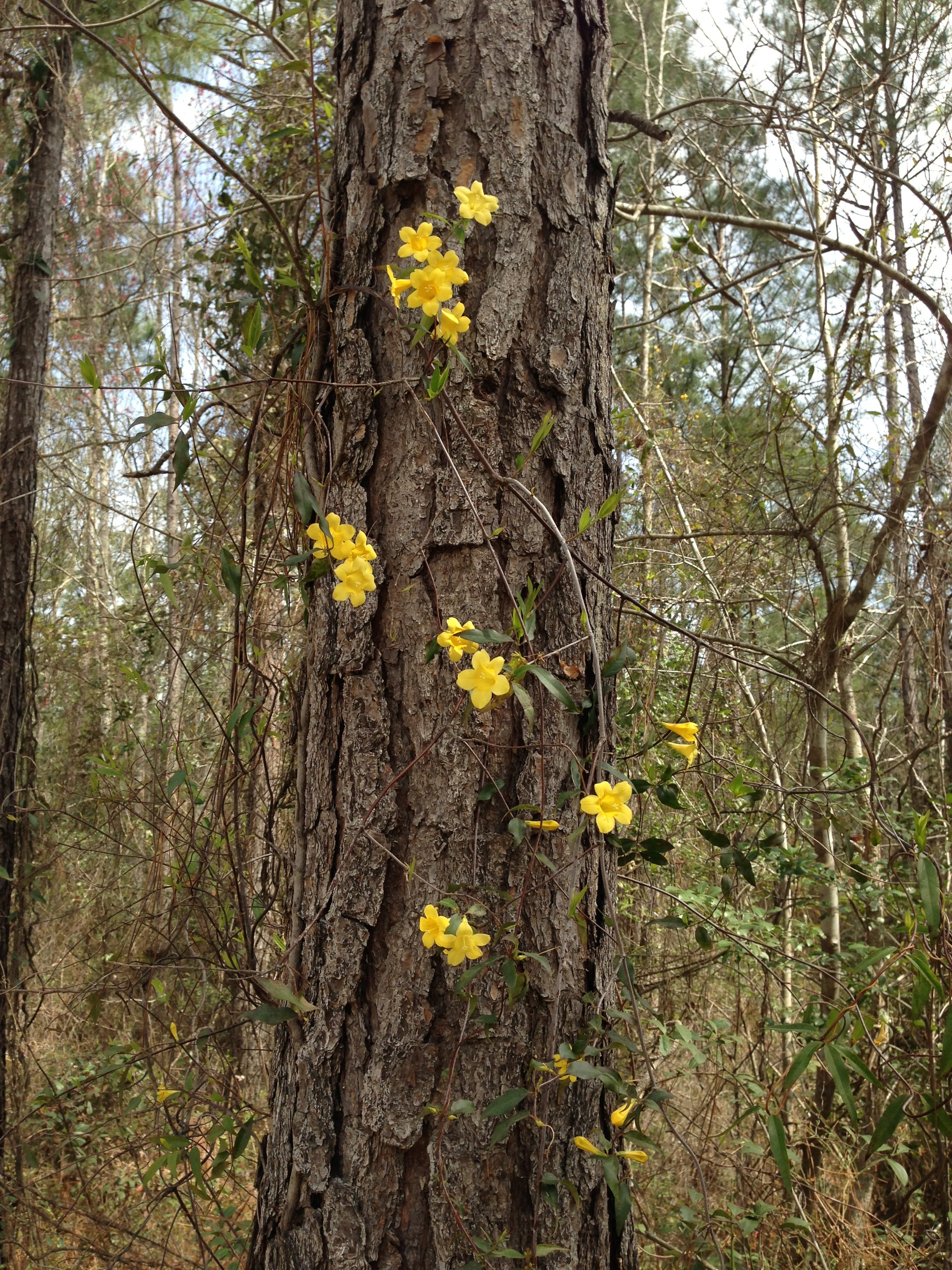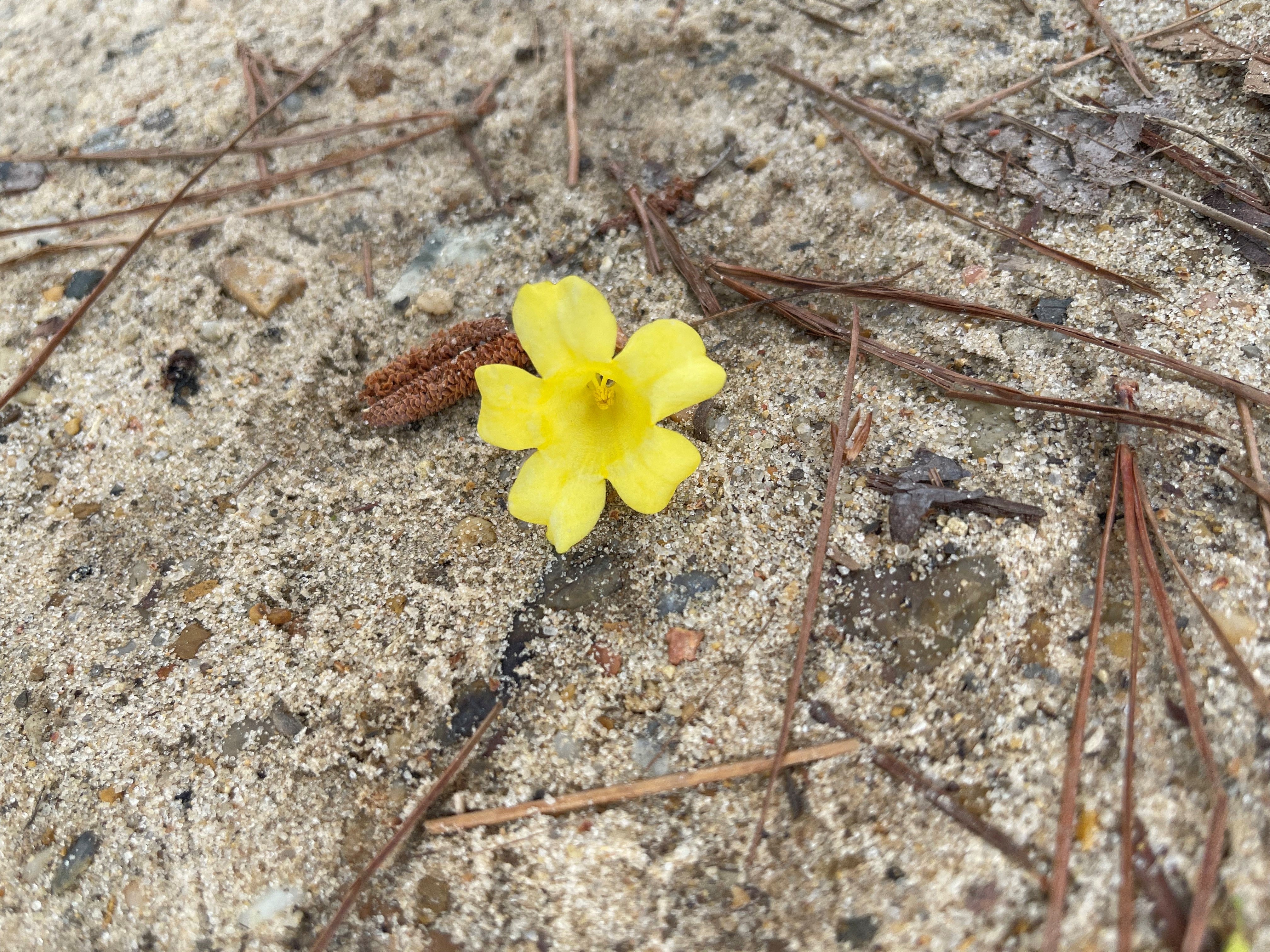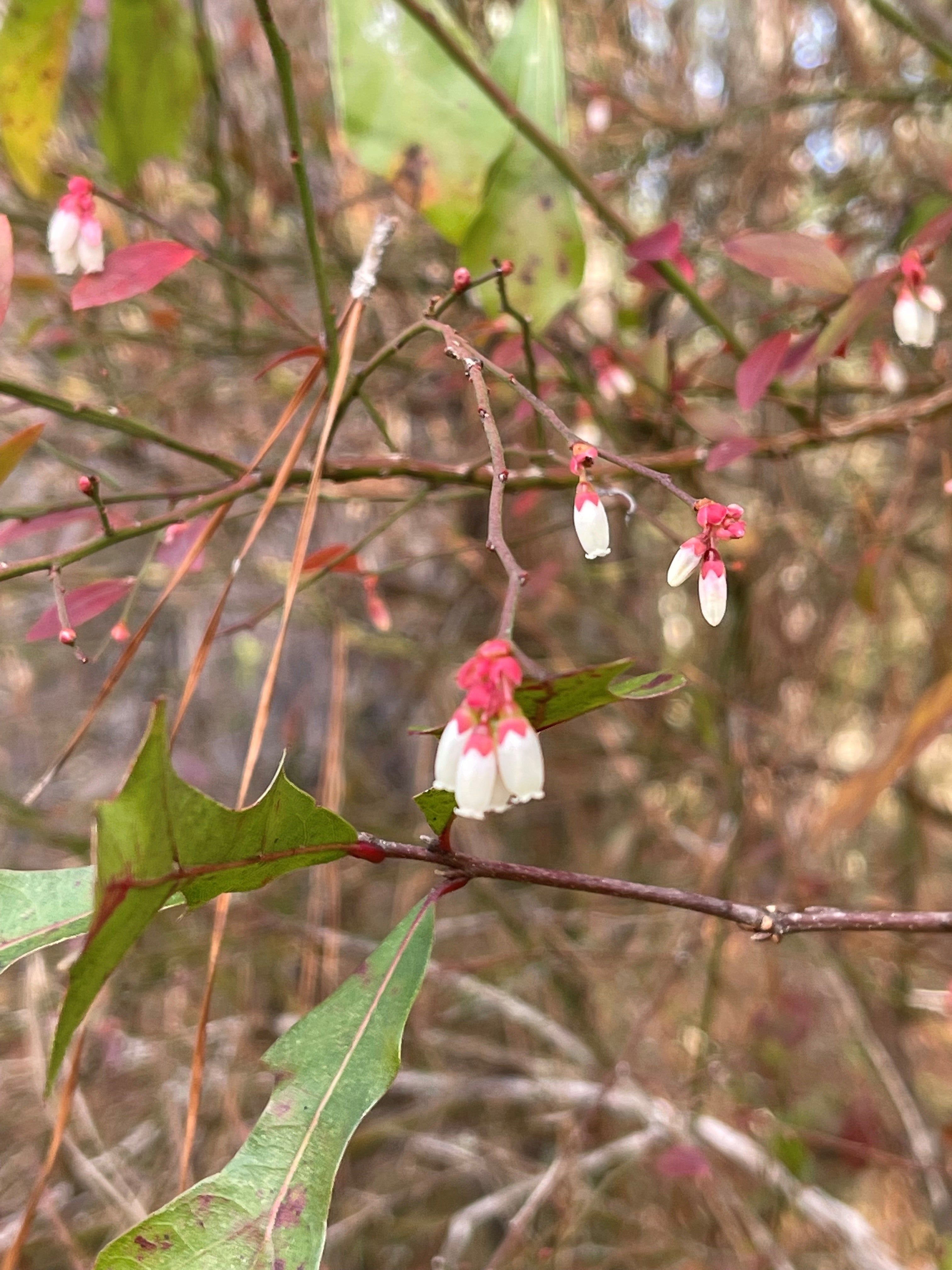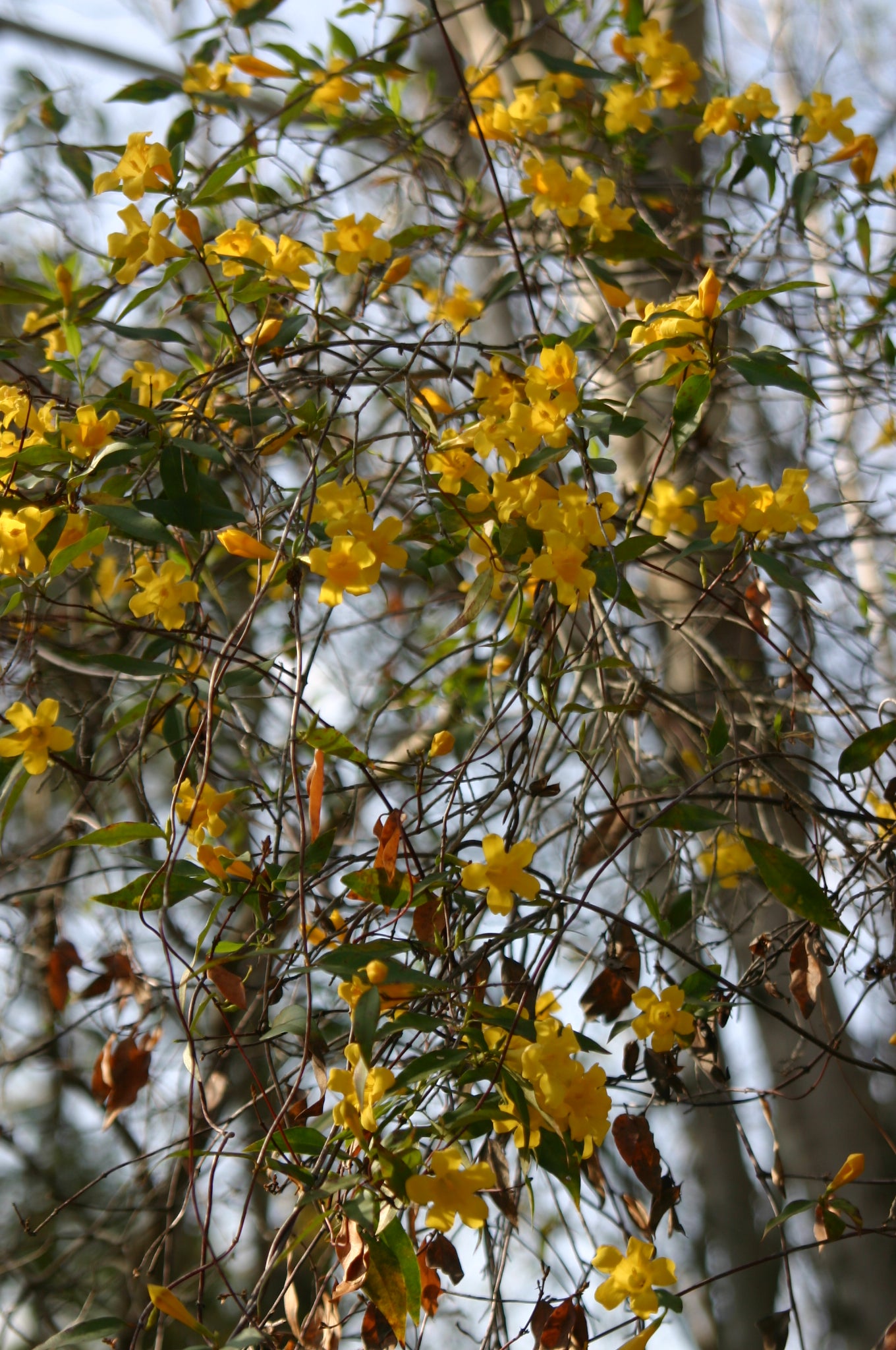Shades of red and gold are decorating our roadsides
Published 12:27 pm Sunday, February 27, 2022
By Patricia Drackett
Director of the Crosby Arboretum and
assistant extension professor of landscape architecture with the Mississippi State University Extension Service.
Have you been doing a doubletake lately as you roll along Pearl River County roadsides? Perhaps you’ve caught a quick glimpse of gold or a blur of scarlet. Each year, this bold color combination heralds our coming spring, about to take off like a rocket here in the coastal south.
The yellow blossoms of Carolina yellow jessamine vine (Gelsemium sempervirens) look like strands of gold beads draped over roadside trees. This native evergreen vine seems especially skilled at clambering up the blocky bark of pine tree trunks. Yellow jessamine is a great example of a plant my college botany teacher used to call a “sixty mile an hour” plant – meaning, one that you can identify in a quick flash.
The scarlet reds you’ve been seeing in roadside forests are most likely flowers of the red maples (Acer rubrum). Notice that Latin species name? Yes, their blooms are ruby red, and they are not just pretty to look at. Although red maple flowers are basically wind-pollinated, their sweet-scented nectar provides food for insects such as bees, flies, moths, and wasps, along with the other unfolding spring blooms beckoning insects to stop and “sip a spell”.
After flowering, red maples develop scarlet winged seeds called samaras. These are a delight for children, when they spin and dance in the air before tumbling to the ground.
Red maple is extremely easy to grow. The tree will thrive in a wide variety of site conditions and soil pH. For example, it will grow in full sun, but is also tolerant of shade, as you will observe on a walk at the Arboretum. Although the tree is characteristic of moist areas, it does equally well on much drier sites.
Carolina yellow jessamine vine is also very undemanding to grow. Although it might look big and scary in the top of a pine tree, it can be contained easily on a mailbox, trellis, or arbor. It performs well in full sun to part shade and will attract butterflies. I’ve enjoyed resting on a friend’s shady hammock, covered by a pergola under a dense jessamine vine, and a wonderful refuge on a hot summer day!
Elliott’s blueberry, (Vaccinium elliottii) has lacy green branches and is often found along woodland edges or near the bases of trees. Called “huckleberry” or “mayberry”, the shrub develops small bell-shaped fruit that are tasty in pancakes or muffins. A bush can be covered with several hundred blossoms at a time.
What all three of these plants have in common, besides possessing attractive early spring blooms, is that they are outstanding “no-fuss” native plants for your home landscape. Red maple always seems to have some portion that glows with a red hue spring through autumn. Yellow jessamine is a dependable low-maintenance vine, and Elliott’s blueberry is an attractive shrub in all seasons. Why not try a few of these plants in your home garden?
In early spring, as I observe this long-anticipated combination of reds and golds on the maple and jessamine that glows brighter each day, I’m reminded of a friend who practiced the art of feng shui design professionally. She spoke of how these two colors, when used at the entrance of a home, made a “quite auspicious” combination as it represented wealth and prosperity. From a design standpoint, using brightly colored plants such as perennials or flowering trees near your entrance will draw the eye, and the focus, of your visitors. If you choose intense, eye-catching blooming species, you won’t need to plant a lot of them to make a strong statement.
The MSU Extension Service website contains a wealth of informative publications to help you choose plants for your landscape, such as “Selecting Landscape Shrubs” and “Selecting Landscape Trees”. Search for, and download, these publications from the Extension website at http://extension.msstate.edu/.
Attend a relaxing Forest Therapy walk with Nadine Phillips, certified Forest Therapy Guide in training with the International Nature and Forest Therapy Alliance on Saturday, March 5, from 12:30 to 3:30 p.m. This inviting way of immersing our senses in the atmosphere of the forest is backed by significant medical and scientific research. The plethora of health benefits from the practice are wide-reaching. Space is limited, and reservations are required. Members $10; non-members $15. Call 601-799-2311 to sign up for this program.
Mark your calendar for our big spring native plant sale on Friday and Saturday, March 25 and 26. See our website at crosbyarboretum.msstate.edu/ or our Facebook page for more information on programs and activities. Crosby Arboretum is located at 370 Ridge Road in Picayune, at I-59 Exit 4. Leashed pets are always welcome!







